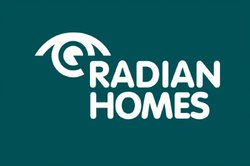What is COSHH?
COSHH is an acronym for ‘Control of Substances Hazardous to Health’. COSHH regulations protect workers by enforcing rules around the adequate control of exposure to materials that cause ill health.
Included in COSHH regulations are dusts, fumes, gases, liquids, gels, and powders, in addition to hazards that may cause allergic reactions and long-term diseases.
COSHH does not cover:
· Lead or asbestos (as they have their own regulations)
· Radioactive substances
· Biological agents outside of the employer’s control
· Medicines
Workplace Exposure Limits
Workplace exposure limits (WELs) are legal limits of exposure to certain substances. These protect workers who may work around substances or processes that could cause harm.
Exposure limits are approved by the HSE, who publicise a list of the current WELs. This list can be found at EH40 Workplace exposure limits and includes around 500 substances.
Not all substances have an exposure limit, this does not mean a substance without a WEL is safe, however. Exposure should always be controlled and where there is a WEL, levels are strictly monitored to indicate whether controls are working effectively.
Exposure to substances classed as carcinogens, mutagens or asthmagens are required to be controlled to ‘as low as reasonably practicable’ (ALARP). The core principle of ALARP is to weigh the risks against the cost, time, and work required to control them. This method covers complex situations where a control may involve a grossly disproportionate sacrifice.
Monitoring Workplace Exposure
Employing the use of WEL monitoring is the most effective method when determining if exposure to hazards is within the occupational exposure limit. Schedule 5 of COSHH specifies that air monitoring must be carried out when employees are exposed to certain substances and processes.
WELs are measured as the concentration of a substance in the air, averaged over a set period. These are calculated using both short term and long-term exposure periods, providing two sets of data for each circumstance. Short term exposure is a 15-minute period, whereas long-term is 8 hours. Short term exposure additionally takes priority over long term.
Exposure monitoring is often measured through air sampling and undertaken by specialist equipment. It is recommended that employers consult a professional when considering WEL monitoring. To ensure that a consultant is competent, please use the HSE’s general guidance document.
COSHH Assessment
A COSHH assessment identifies, assesses, and controls risks associated with hazardous substances.
Identify the risk
Harmful substances can be identified by reading product labels and safety data sheets. Ensure you know the GB Classification, Labelling, and Packaging (CLP) hazard pictograms to spot the risks. Visit the HSE website to learn more about CLP icons.
Assess the risk
To effectively assess risks, you must determine who could be harmed and how. The HSE breaks this down as:
- How workers might be exposed (whether the substance can be inhaled, get onto or through the skin, or be swallowed) and the effects of exposure by each of these routes.
- How often people work with the substance and for what length of time.
- Anyone else who could be exposed – do not forget maintenance workers, contractors and other visitors or members of the public.
- What you are already doing to control the risks.
- What further action you need to take to control the risks.
- Who needs to carry out the action to control the risks.
- When the action is required by (time frame).
Control the risk
Once a risk has been identified and assessed, you should consider several steps to controlling it. A hazard may require multiple controls to ensure appropriate exposure protection, including:
- Elimination – does the substance need to be used? Are there alternative materials, or a different process which does not create risk of exposure?
- Change the process – consider if a different process or step within a process can reduce exposure.
- Containment – a system such as local exhaust ventilation (LEV) may effectively minimise the release of certain substances.
- Systems of work – control access so only individuals required to be there are exposed. Utilise appropriate storage and disposal methods.
- Cleaning – ensure you have the right equipment to reduce the effect of spillages and integrate effective cleaning processes.
- Personal protective equipment – if other means have been exhausted, PPE should be provided in combination with other measures. Ensure you have selected the correct PPE for the hazard. To learn more respiratory hazards, visit our page on respiratory safety.
- Information and training – appropriate training can reduce accidents and mishandling of substances.
Safety Data Sheets
Safety data sheets (SDS) provide critical information on chemical substances. Data sheets will be in the form of either product safety data sheet (PSDS) or material safety data sheet (MSDS), proving information such as likely routes of exposure and the effects from long and short-term exposure.
Data sheets are key in identifying what substances pose risks and the type of risk associated. This information is necessary when performing a risk assessment. An SDS is not the same as a risk assessment. It’s important that a risk assessment is used alongside SDS’ to assess the risk from use of the substance within a real-life work scenario.
Regulation 12 of COSHH requires that an employer provides information, instruction and training for people exposed to hazardous substances. To do this, a safety data sheet is vital as this helps an employer understand the hazardous substance. It is, therefore, imperative that employers obtain an SDS from a supplier.




